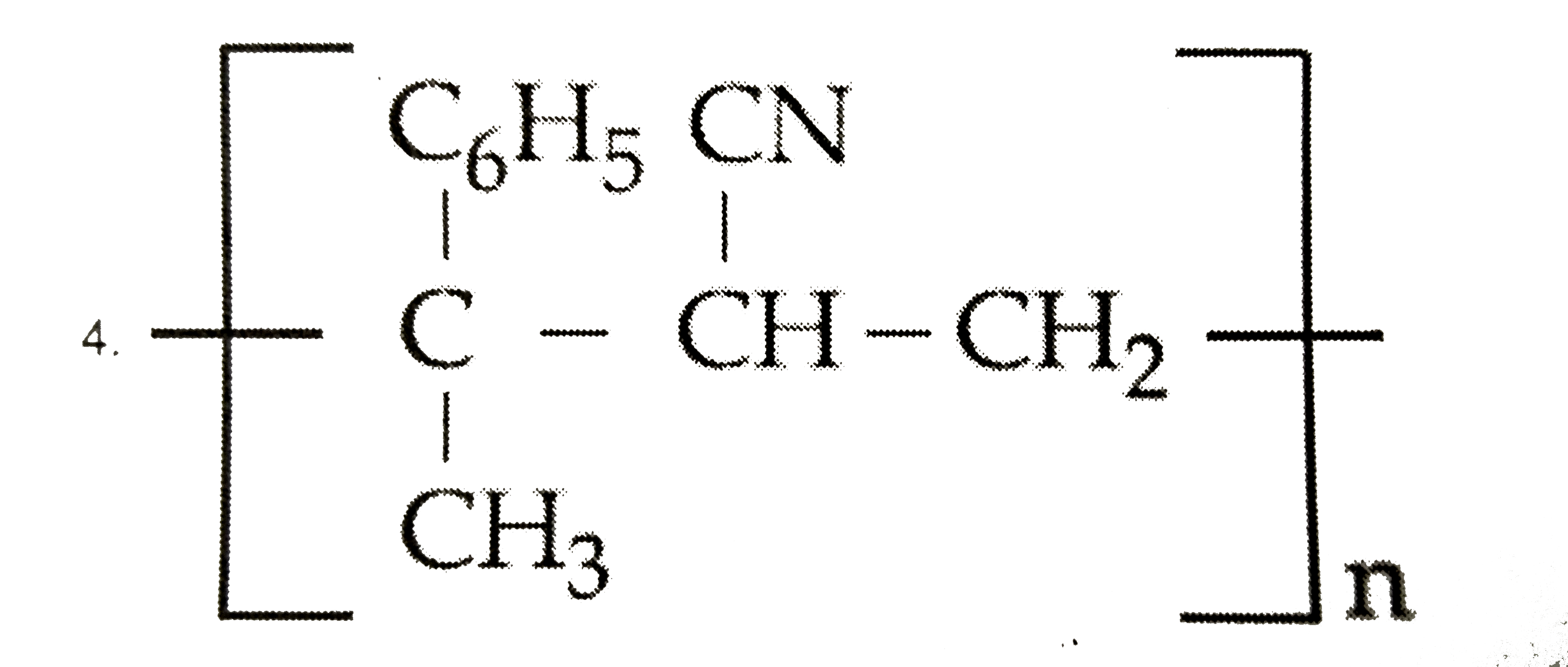What is meant by addition polymerization ?
Text Solution
Addition polymerization is the type of polymerization in which a large number of molecules of the same or different monomers add to one another leading to the formation of a macromolecule without the elimination of simple molecules such as water. For example, formation of polyethene from ethene.
|
Updated on:21/07/2023
Topper's Solved these Questions
- BOOK - KALYANI PUBLICATIONCHAPTER - POLYMERS EXERCISE - EXERCISE (PART-II (DESCRIPTIVE QUESTIONS )) ( SHORT ANSWER QUESTIONS5videos
POLYMERS
- BOOK - KALYANI PUBLICATIONCHAPTER - POLYMERS EXERCISE - EXERCISE (PART-I ( OBJECTIVE QUESTIONS )) (Match the following:)1videos
POLYMERS
- BOOK - KALYANI PUBLICATIONCHAPTER - P-BLOCK ELEMENTSEXERCISE - ISC EXAMINATION QUESTIONS(PART-I)(OBJECTIVE QUESTIONS)(THE CORRECT ALTERNATIVE FROM THE CHOICES GIVEN :)6videos
P-BLOCK ELEMENTS
- BOOK - KALYANI PUBLICATIONCHAPTER - SOLID STATEEXERCISE - ISC EXAMINATION QUESTIONS PART-I (Numerical Problems)5videos
SOLID STATE
Similar Questions
Knowledge Check
- Question 1 - Select One
The polymers made by addition polymerization from two different monomers are termed as
Aaddition polymersBcopolymersCcondensation polymersDhomopolymers - Question 2 - Select One
The copolymer formed by addition polymerization of styrene and acrylonitrile in the presence of peroxide is :
A B
B C
C D
D
- Question 3 - Select One or More
Which of the following statements are true about the addition polymerization?
AAddition polymerization occurs between molecules containing double or triple bond.BIt takes place in the presence of organic peroxides.CIt proceeds via ionic mechanism in the presence of organic peroxides.DPolythene and polystyrene are addition polymers.
What are the alternative terms for addition polymerization and condensation polymerisation?
View SolutionCorrect the following statements by changing the underlined part of the sentence.
Proteins are formed by the addition polymerization–––––––––––––––––––––––––– of aminoacids.View SolutionChain growth addition polymerization is an important reaction of:
View SolutionA : Polypropylene is an addition polymer.
R:Addition polymerization occurs among molecules which contain double bonds.View SolutionBenzoyl peroxide has a role in which of the following type of addition polymerization?
View Solution
